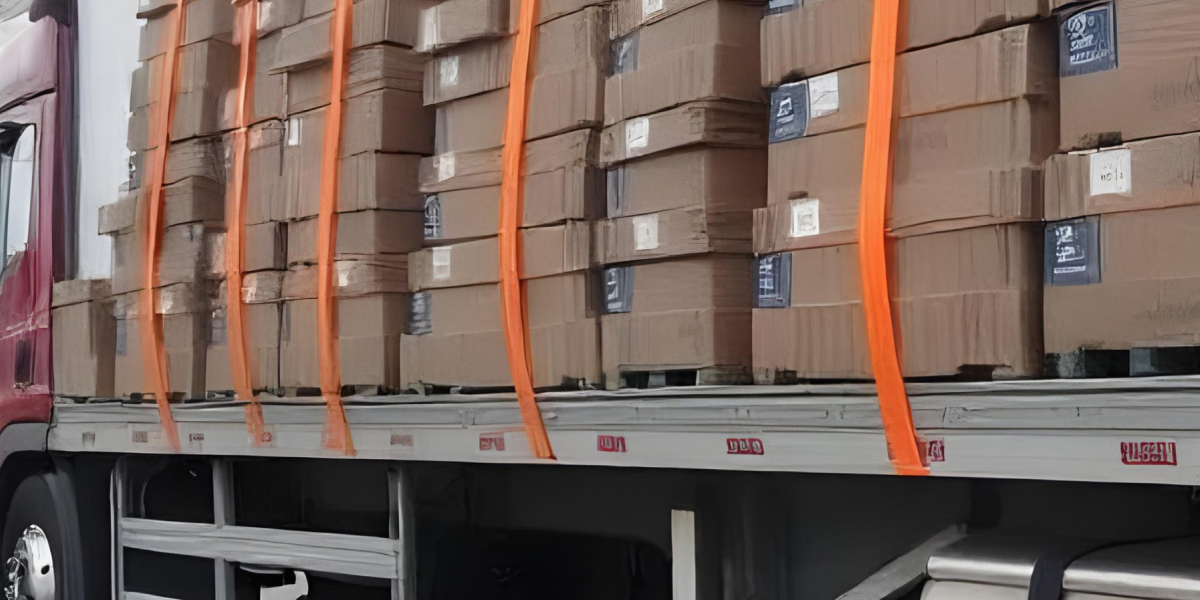When it comes to securing cargo on your truck, selecting the right ratchet straps is essential. Whether you’re a professional truck driver or someone who needs to transport heavy loads occasionally, it provide a reliable and sturdy solution.
But with various types of straps on the market, it can be challenging to determine which is best for your specific needs. This guide will walk you through the key considerations to help you choose the ideal ratchet straps for your truck, ensuring your load remains secure and you stay compliant with safety regulations.
What Are Ratchet Straps?
Ratchet straps, also known as lashing straps or tie-down straps, are made from durable polyester webbing and are designed to secure loads during transport. They work by tightening around cargo using a ratcheting mechanism, ensuring the load is held firmly in place.
Unlike simple ropes or bungee cords, offer a much higher level of tension and stability, making them the preferred choice for securing large or heavy items on trucks.
Key Considerations When Choosing Ratchet Straps
1. Weight Capacity
One of the first things to look for when selecting ratchet straps is the weight capacity, also known as the Working Load Limit (WLL). This tells you how much weight the straps can safely handle. It’s crucial to choose straps with a WLL that matches or exceeds the weight of your cargo.
For example, if you frequently transport heavy machinery or construction materials, you’ll need heavy-duty load restraint straps with a high weight capacity. Overloading a strap can lead to failure during transit, which could cause accidents or damage to your cargo.
2. Length of the Strap
The length of the ratchet strap is another important factor. You need straps that are long enough to wrap around your cargo and secure it to the truck bed, but not so long that they become cumbersome or difficult to manage. Measure the dimensions of your typical loads to determine the appropriate strap length.
It come in various lengths, from shorter ones for smaller items to longer straps designed for large, bulky loads. If you’re unsure, it’s better to have straps that are slightly too long than too short. Excess strap can be tied off or secured, but straps that are too short won’t provide the necessary restraint.
3. Type of Hooks
Ratchet straps are available with different types of hooks on the ends. The most common options are flat hooks, S-hooks, and snap hooks.
- Flat hooks are ideal for trucks with anchor points or rails along the sides of the truck bed.
- S-hooks are more versatile and can be used with a wide range of anchor points.
- Snap hooks offer an added level of security because they close around the anchor point, preventing the hook from accidentally slipping out.
Consider the design of your truck and the anchor points available to determine which type of hook will work best for you.
4. Material Quality
The material of the ratchet strap itself plays a big role in its durability and performance. High-quality polyester webbing is the most common material used for ratchet straps because of its strength, resistance to weather conditions, and ability to maintain tension over time.
In Australia, where weather conditions can be unpredictable, it’s essential to choose straps that can withstand UV exposure, rain, and extreme temperatures. Inferior quality straps may deteriorate quickly when exposed to the elements, compromising their ability to restrain your load securely.
5. Ease of Use
While all ratchet straps serve the same basic function, some are easier to use than others. Look for straps with a user-friendly ratcheting mechanism that allows for quick tightening and loosening. This is especially important if you frequently load and unload your truck, as a complicated ratcheting system can slow you down and become frustrating over time.
Some load restraint straps also come with built-in storage solutions or retractable features, making them easier to store when not in use.
Why Ratchet Straps Are a Must for Truck Owners
Whether you’re transporting goods across the city or across the country, having reliable load restraint equipment is non-negotiable. Ratchet straps are designed to handle the bumps, turns, and vibrations that occur during transport, keeping your cargo safe and preventing any unexpected shifts.
In Australia, load restraint is a critical part of road safety, and failing to secure your load properly can result in hefty fines or even accidents. Using high-quality lashing straps ensures compliance with local regulations and gives you peace of mind knowing that your cargo is secure.
Protect Your Investment
Investing in high-quality ratchet straps isn’t just about complying with load restraint Australia laws – it’s about protecting your cargo. A secure load prevents damage to your goods, reduces the risk of accidents, and ensures that your truck stays in top condition. By using the right straps, you’re also protecting other road users, as unsecured cargo can become a serious hazard.
Types of Ratchet Straps for Different Applications
- Light-duty straps: Ideal for smaller loads such as furniture, appliances, or personal items.
- Heavy-duty straps: Designed for securing larger, heavier cargo like construction materials, machinery, or vehicles.
- Specialty straps: Some are designed for specific applications, such as securing boats, motorcycles, or delicate items that require extra padding.
Knowing the right type of ratchet strap for your application ensures that your load remains secure during transport.
Final Thoughts
Choosing the right ratchet straps for your truck may seem like a small decision, but it’s one that can have a big impact on your safety and the security of your cargo. By considering factors like weight capacity, strap length, hook type, and material quality, you can find the perfect load restraint straps for your needs.


